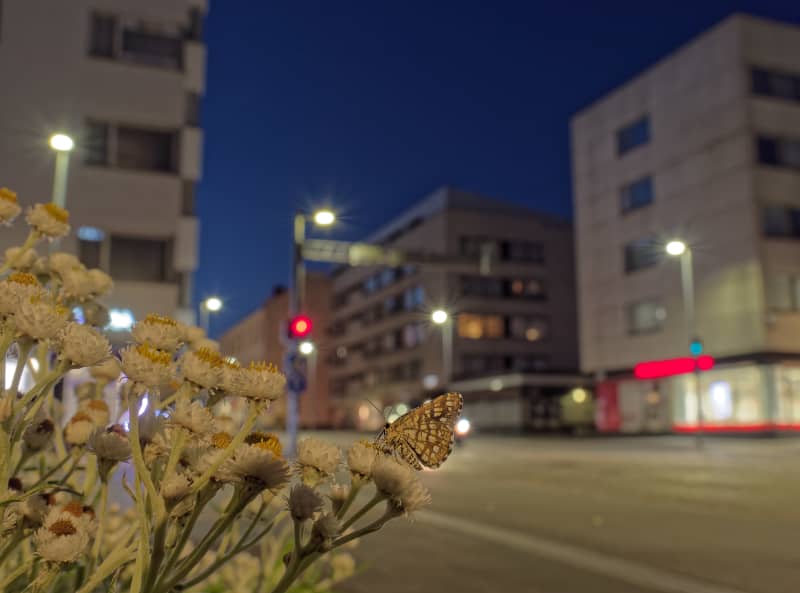
An international study led by the University of Oulu shows that light pollution misleads butterflies into misinterpreting the length of the day. This could be its undoing.
Even dim street lights at night can be fatal to butterflies, according to an international study led by the University of Oulu. It is light pollution that, in its worst cases, misleads butterfly larvae into thinking that the short days of late summer and autumn are long and that they will develop into adult butterflies as soon as they emerge from their cocoons.
Normally, they would go into hibernation and only mature after the winter.
Butterflies that have been fooled by light pollution are unable to reproduce successfully in autumn conditions, nor do they survive the winter. This reduces the number of butterflies the following summer.
The result of the study can partly explain the loss of insects.
The research result is consistent with previous studies. According to Kivelä, the adverse effects of light pollution in terms of hibernation have previously been studied with some flies and mosquitoes.
Even the city dweller has not adapted
The focus of the research led by the University of Oulu was the square meter butterfly, which is a nocturnal butterfly but is exceptional in that it also moves during the day.
The researchers tested in laboratory conditions how light pollution affects the development of butterfly larvae into overwintering cocoons. The butterflies were exposed to dim LED light at night.
– The worrisome information was that even a very weak light pollution may have a harmful effect on insects, Kivelä says.
The study compared butterfly populations in urban and rural environments. The comparison was carried out in Central Europe and the Nordic countries.
– Both urban and rural populations react to light pollution in the same way. This means that even urban butterflies do not seem to have adapted to the light-polluted environment of cities. This was a new observation.
The study showed that Central European populations were more sensitive to light pollution than Nordic populations. According to Kivelä, this is probably explained by the brighter summer nights in the north and the adaptation of local butterflies to them.
– However, it is worth noting that light pollution also had a negative effect on Nordic populations, so reducing light pollution is also beneficial for Finnish butterflies.
There are many solutions
Researchers consider it important for the protection of insects to reduce light pollution. Academy researcher Sami Kivelä states that as long as there is a will, there are enough solutions.
– Avoid unnecessarily bright lights at night, direct the light only where it is needed and use motion detectors so that the light only comes on when it is needed, he lists.
The research still needs to be continued. According to Kivelä, the goal is to learn more about, among other things, how light pollution affects different insect species and how the results obtained in the laboratory now appear in terrain conditions.
The study was published in the Journal of Applied Ecology on Wednesday, April 19.
